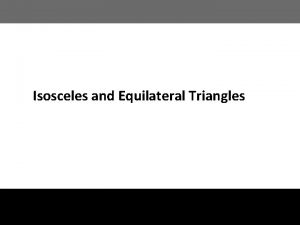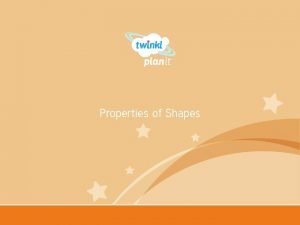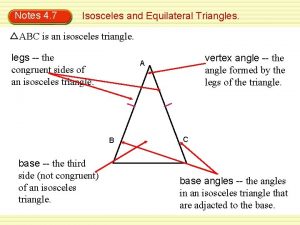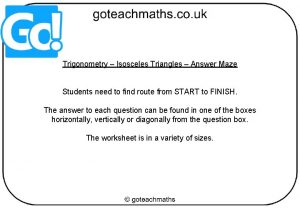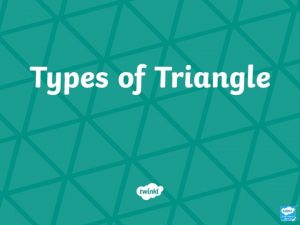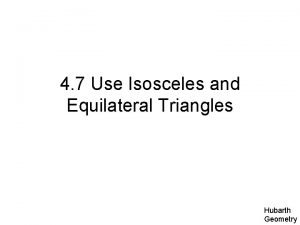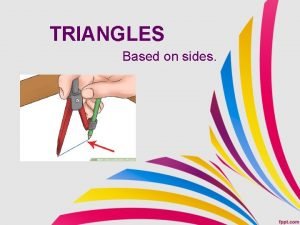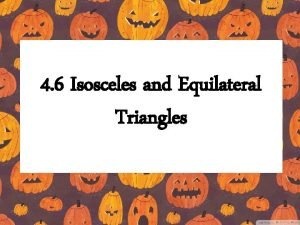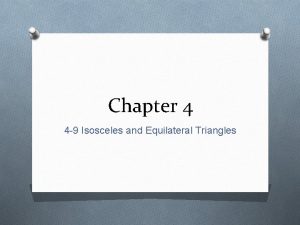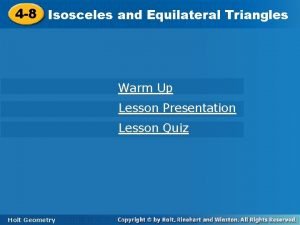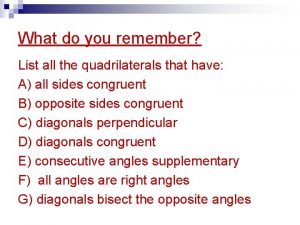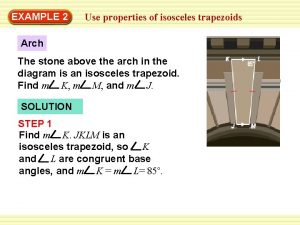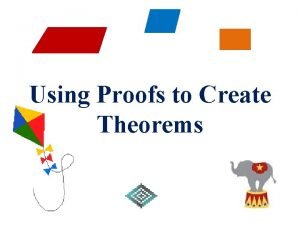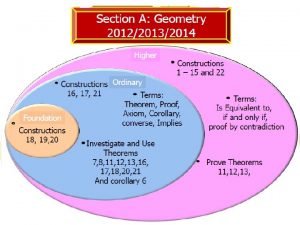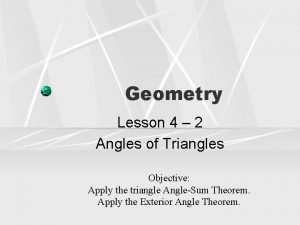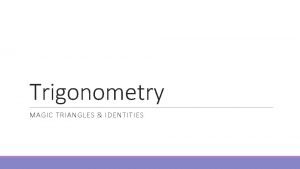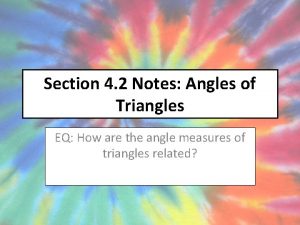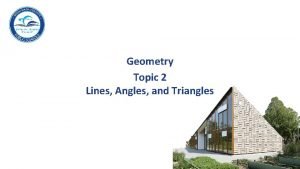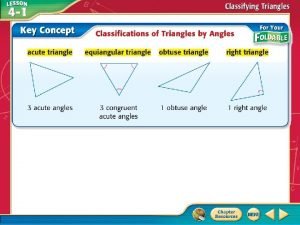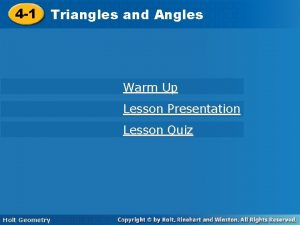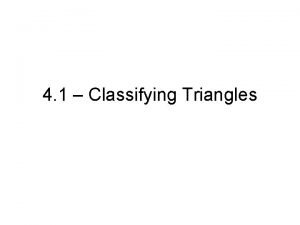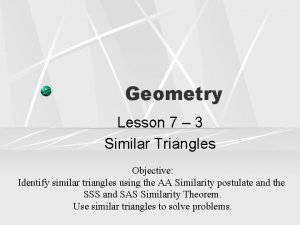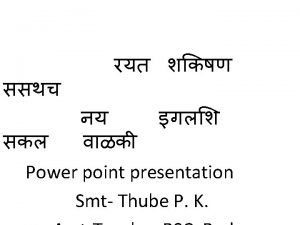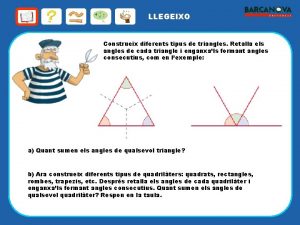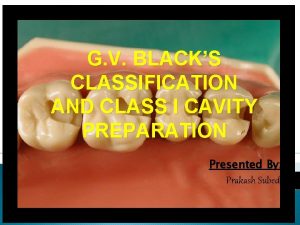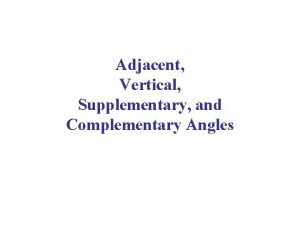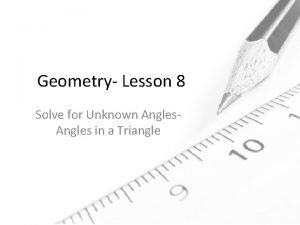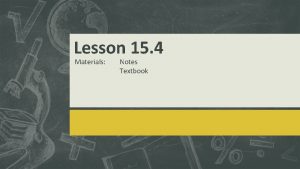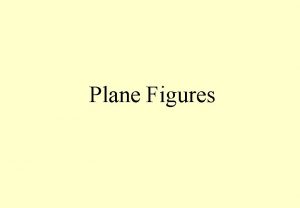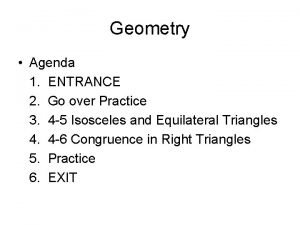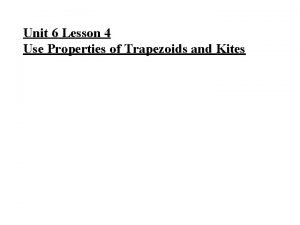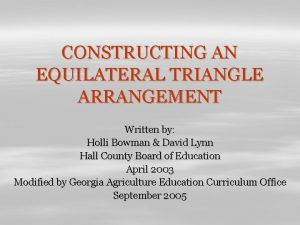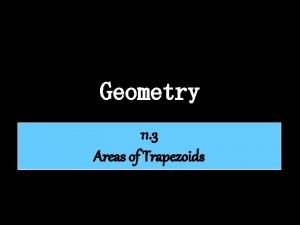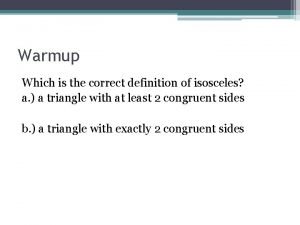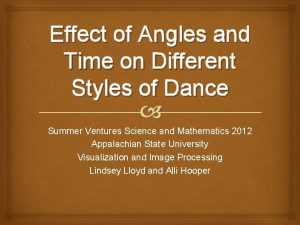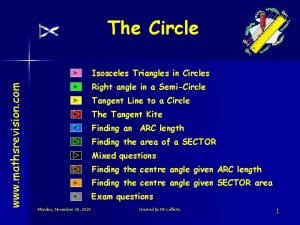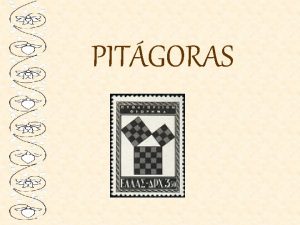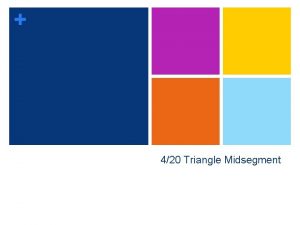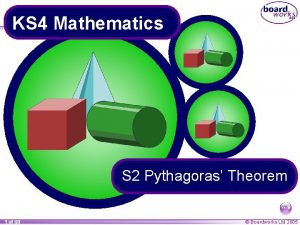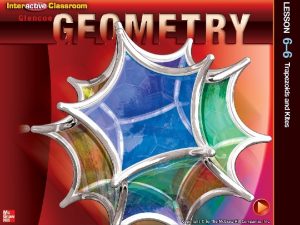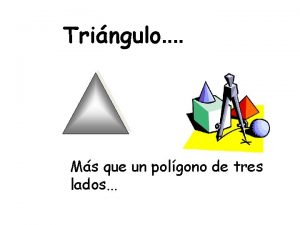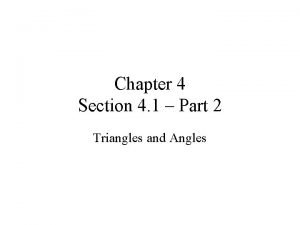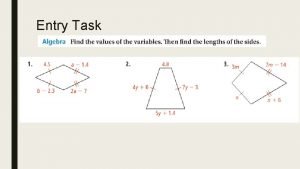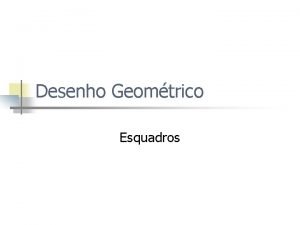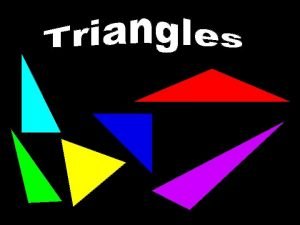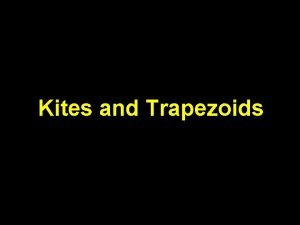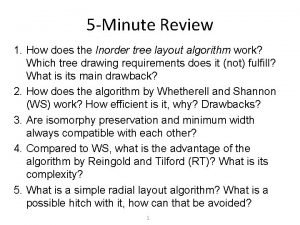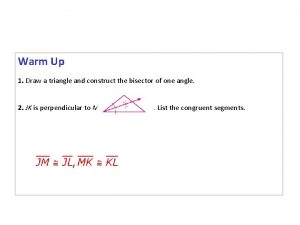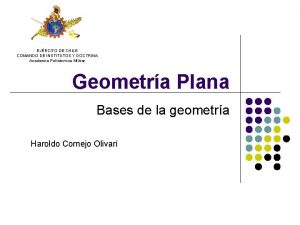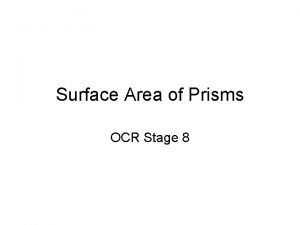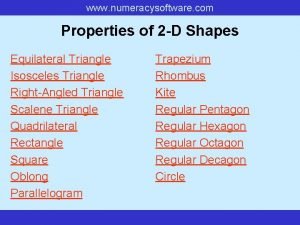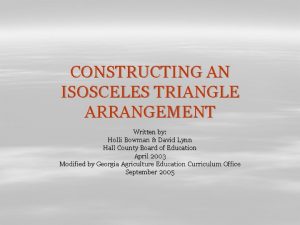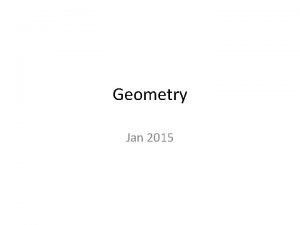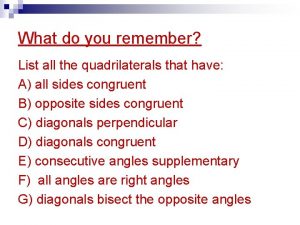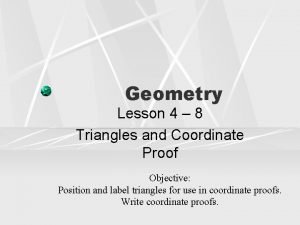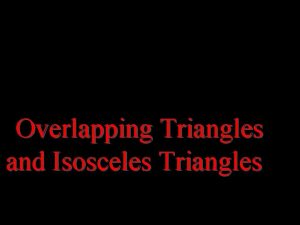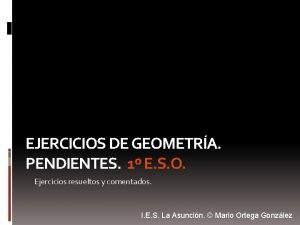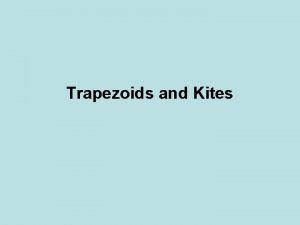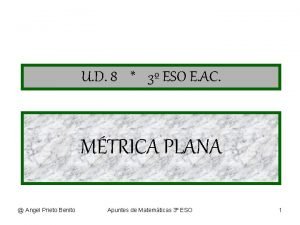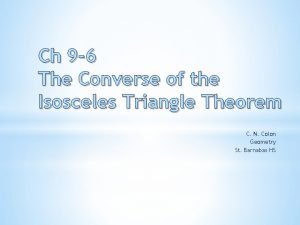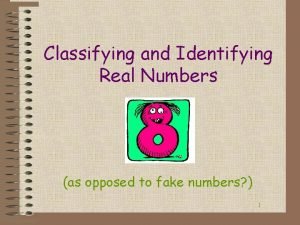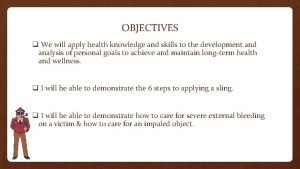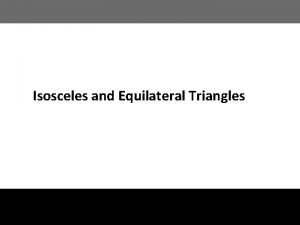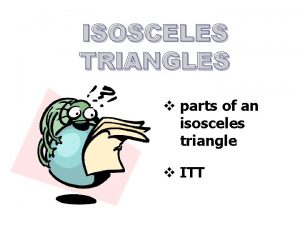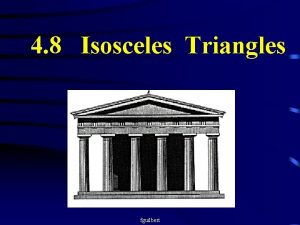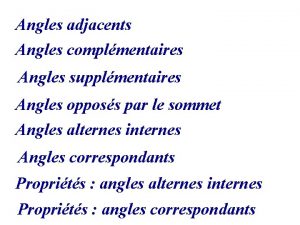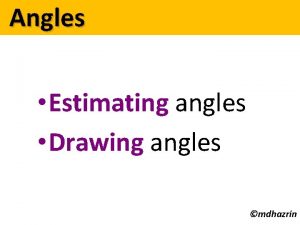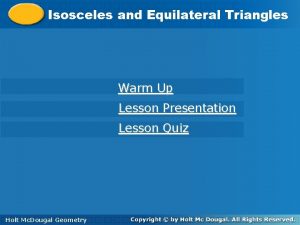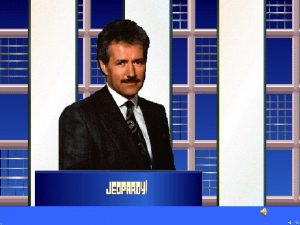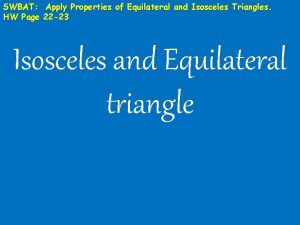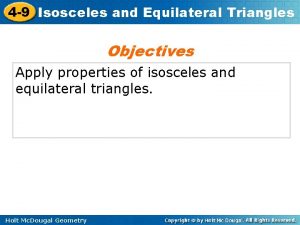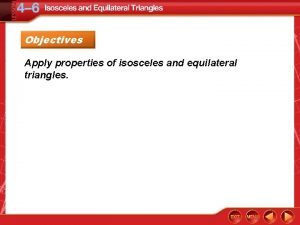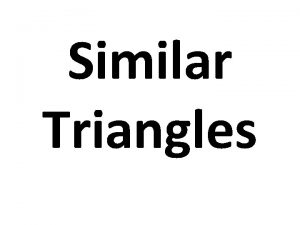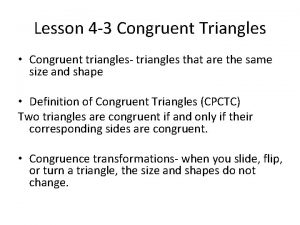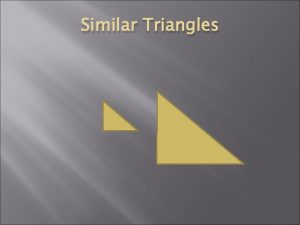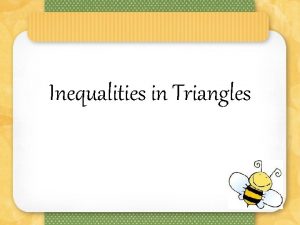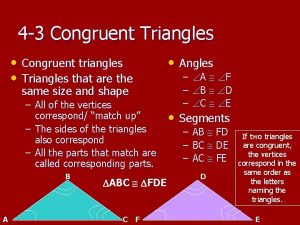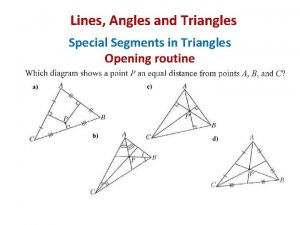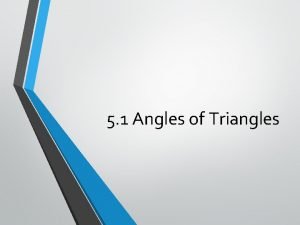Apply knowledge of angles with isosceles triangles Apply





































































































- Slides: 101

Apply knowledge of angles with isosceles triangles








Apply knowledge of angles and lengths in equilateral triangles





Apply knowledge of angles in quadrilaterals (360) and pentagons (540)


The dotted line is a diagonal of this rhombus. If angle a = 80°, what is angle b? If angle b = 80°, what is angle a?


Recognise vertically opposite angles and Z angles





Solve problems involving angles





Here is a regular decagon, with two diagonals drawn in. Calculate the sizes of angles a, b and c 36° 72° 144°

Draw shapes by measuring angles

Here is a sketch of a triangle. It is not drawn to scale. Draw the full-size triangle accurately below. Use a protractor and a ruler. One line has been drawn for you.

Here is a sketch of a quadrilateral. It is not drawn to scale. Draw the full-size quadrilateral accurately below. Use a protractor (angle measurer) and a ruler. Two of the lines have been drawn for you.

Here is a sketch of a triangle. It is not drawn to scale. Draw the full-size triangle accurately below. Use a protractor (angle measurer) and a ruler. One line has been drawn for you.

Here is a sketch of a triangle. It is not drawn to scale. Draw the full-size triangle accurately below. Use an angle measurer (protractor) and a ruler. One line has been drawn for you.

This is a design for an arrowhead. Below is part of a larger scale drawing of the arrowhead. The drawing has the same size angles as the design. Draw two more lines to complete the arrowhead accurately. Use an angle measurer (protractor).

Here is the start of a spiral sequence of right-angled triangles. Draw accurately the next right-angled triangle on the diagram. Use an angle measurer to find the 25° size of angle A.

Here is a sketch of a triangle. It is not drawn to scale. Draw the full size triangle accurately, below. Use an angle measurer (protractor) and a ruler. One line has been done for you.

Recognise parts of a circle

A bicycle wheel has a diameter of 64 cm. What is the radius of the bicycle wheel? 32 cm

A circle has a diameter of 22 cm. What is the length of its radius? 11 cm 22 cm ÷ 2 =11 cm

Use these measurements to complete the sentences below. The radius of a circle is _____ cm; its diameter is _____ cm and its circumference is approximately _____ cm.

12. 5 cm² 5 x 5 = 25 25 ÷ 2 =12. 5

Solve problems involving nets of 3 D shapes







Calculate volume





Write the possible dimensions of a cuboid given volume




You can make only four different cuboids with 16 cubes.

You can make only four different cuboids with 16 cubes. How many of cuboid D make a cube of dimensions 4 × 4?

Calculate missing lengths given volume




Calculate volume from nets



Solve problems involving volume of cubes and cuboids

Amina made this cuboid using centimetre cubes. Stefan makes a cuboid that is 5 cm longer, 5 cm taller and 5 cm wider than Amina’s cuboid. What is the difference between the number of cubes in Amina’s and Stefan’s cuboids?


The diagram shows a cuboid. What is the volume of this cuboid? The volume of a different cuboid is half the volume of the cuboid above. What could the dimensions of this different cuboid be?


Solve ratio problems involving coordinates on a simple co-ordinate grid









Identify and plot points on a full coordinate grid










Translate a shape on a full co-ordinate grid



On the grid there are three points joined by two lines. Lara plots another point on the grid at (– 1, 2). She joins the points to make a quadrilateral. Complete Lara’s quadrilateral on the grid. Use a ruler. Then Lara translates the quadrilateral 4 squares to the right. Draw the quadrilateral in its new position on the grid.

Reflect a shape on a full co-ordinate grid



Identify co-ordinates from equations on a line graph



 Isosceles and equilateral
Isosceles and equilateral Angles - vertically opposite angles and missing angles
Angles - vertically opposite angles and missing angles Cross apply vs outer apply
Cross apply vs outer apply Isosceles and equilateral triangles notes
Isosceles and equilateral triangles notes Law of sines and cosines maze
Law of sines and cosines maze 3 sided circle
3 sided circle 4-9 isosceles and equilateral triangles
4-9 isosceles and equilateral triangles Corollary to the converse of the base angles theorem
Corollary to the converse of the base angles theorem Isosceles triangle base
Isosceles triangle base 180-65
180-65 All isosceles triangles are similar true or false
All isosceles triangles are similar true or false Lesson 4-6 isosceles and equilateral triangles
Lesson 4-6 isosceles and equilateral triangles Notes 4-9 isosceles and equilateral triangles
Notes 4-9 isosceles and equilateral triangles 4-8 isosceles and equilateral triangles
4-8 isosceles and equilateral triangles 4-5 practice isosceles and equilateral triangles
4-5 practice isosceles and equilateral triangles 4-8 isosceles and equilateral triangles
4-8 isosceles and equilateral triangles 4-8 isosceles and equilateral triangles
4-8 isosceles and equilateral triangles Properties of quadrilaterals quizizz
Properties of quadrilaterals quizizz J and m are base angles of isosceles trapezoid jklm. if
J and m are base angles of isosceles trapezoid jklm. if Congruent
Congruent Sides opp. equal ∠s
Sides opp. equal ∠s I will apply my knowledge
I will apply my knowledge Lesson 4-2 angles of triangles answer key
Lesson 4-2 angles of triangles answer key Magic triangle formula
Magic triangle formula 4-1 angles of triangles
4-1 angles of triangles Topic 2 angles of triangles
Topic 2 angles of triangles How to classify triangles
How to classify triangles 4-1 angles of triangles
4-1 angles of triangles Topic 2 angles of triangles
Topic 2 angles of triangles Classifying triangles in the coordinate plane
Classifying triangles in the coordinate plane Similar images
Similar images Triangles types and angles
Triangles types and angles Triangles tipus
Triangles tipus Gv black classification of tooth preparation
Gv black classification of tooth preparation Vertical angles
Vertical angles Find the unknown (labeled) angle in each figure
Find the unknown (labeled) angle in each figure Module 15 lesson 1 central angles and inscribed angles
Module 15 lesson 1 central angles and inscribed angles Knowledge shared is knowledge multiplied meaning
Knowledge shared is knowledge multiplied meaning Street smarts vs book smarts
Street smarts vs book smarts Knowledge creation and knowledge architecture
Knowledge creation and knowledge architecture Knowledge claim
Knowledge claim What is shared knowledge
What is shared knowledge Contoh shallow knowledge dan deep knowledge
Contoh shallow knowledge dan deep knowledge Knowledge shared is knowledge squared
Knowledge shared is knowledge squared A priori vs a posteriori
A priori vs a posteriori Gertler econ
Gertler econ What is incentre
What is incentre Converse of isosceles triangle theorem
Converse of isosceles triangle theorem Interior angles of a kite
Interior angles of a kite Triangle arrangement step by step
Triangle arrangement step by step Find the area of the isosceles trapezoid.
Find the area of the isosceles trapezoid. Isosceles triangle reason
Isosceles triangle reason Converse of isosceles triangle theorem
Converse of isosceles triangle theorem Triangle isosceles
Triangle isosceles Propriedades dos quadriláteros 7o ano
Propriedades dos quadriláteros 7o ano Homero triangulo isosceles
Homero triangulo isosceles Basic floral design shapes
Basic floral design shapes Isosceles triangle midsegment
Isosceles triangle midsegment Pythagoras theorem chart
Pythagoras theorem chart If qrst is an isosceles trapezoid find m r
If qrst is an isosceles trapezoid find m r Cosas de tres lados
Cosas de tres lados Name the legs of isosceles triangle pmq
Name the legs of isosceles triangle pmq Kite angles conjecture
Kite angles conjecture Trace uma reta s paralela a r passando por p
Trace uma reta s paralela a r passando por p T madas
T madas Exterior angles of a trapezoid
Exterior angles of a trapezoid Isosceles right angled triangle
Isosceles right angled triangle How to construct incenter of triangle
How to construct incenter of triangle The kite has rotational symmetry of order
The kite has rotational symmetry of order Left isosceles triangle
Left isosceles triangle Transversal de gravedad
Transversal de gravedad Sum of isosceles triangle
Sum of isosceles triangle Surface area of a trapezoid prism
Surface area of a trapezoid prism Features of equilateral triangle
Features of equilateral triangle Isosceles triangle arrangement
Isosceles triangle arrangement Rectangulo caracteristicas
Rectangulo caracteristicas In isosceles trapezoid qrst shown below qr and ts are bases
In isosceles trapezoid qrst shown below qr and ts are bases Isosceles trapezoid
Isosceles trapezoid 4-8 triangles and coordinate proof answer key
4-8 triangles and coordinate proof answer key Overlapping isosceles triangle proofs
Overlapping isosceles triangle proofs Converse of isosceles triangle
Converse of isosceles triangle Triangulo equilatero caracteristicas
Triangulo equilatero caracteristicas 6-6 trapezoids and kites
6-6 trapezoids and kites Properties of median of isosceles triangle
Properties of median of isosceles triangle Diagonal mayor
Diagonal mayor Converse to the isosceles triangle theorem
Converse to the isosceles triangle theorem Monash abroad exchange
Monash abroad exchange Kent support and assistance apply online
Kent support and assistance apply online Atilla el
Atilla el Dara newton utrgv
Dara newton utrgv Ucas apply advisers
Ucas apply advisers Classifying real numbers
Classifying real numbers Ucas application login
Ucas application login Understanding your health and wellness chapter 1
Understanding your health and wellness chapter 1 Apply harvard
Apply harvard Gregor mendel’s principles of genetics apply to
Gregor mendel’s principles of genetics apply to I will apply health
I will apply health Iulm digger
Iulm digger Notice ikinci hali
Notice ikinci hali Uwayapply
Uwayapply Using r in azure
Using r in azure Example of psychological noise
Example of psychological noise
